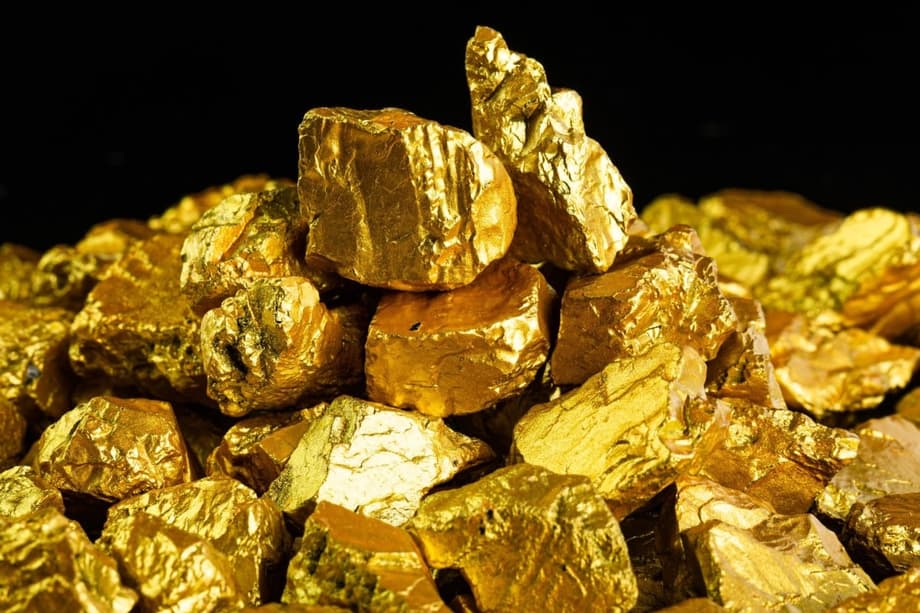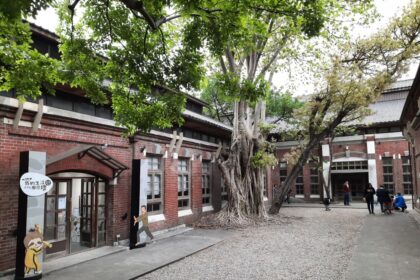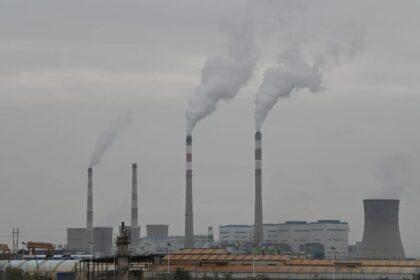A rare find in the Kunlun Mountains
China’s geological teams say a new gold belt is emerging in the West Kunlun range near the western edge of Xinjiang, with early assessments pointing to contained gold that could exceed 1,000 tonnes. The finding, described in a peer reviewed paper dated November 4 in Acta Geoscientica Sinica by He Fubao of the Kashgar Geological Team and collaborators, is the latest in a string of large scale gold announcements in 2025. It follows major discoveries in Liaoning in the northeast and Hunan in central China that officials have said are in the same thousand tonne class.
The potential scale of the West Kunlun belt stands out. Single deposits that reach a few hundred tonnes of contained metal are already considered very large by industry standards. Finding a belt that may host multiple deposits with combined gold above the thousand tonne mark is rare in modern exploration. For years, many analysts estimated that only about 3,000 tonnes of gold remained unmined in China, roughly a quarter of the pending endowment thought to be in Russia or Australia. The rapid cadence of new announcements suggests that number could be revised upward as new data arrives.
He Fubao, a senior engineer on the Kashgar Geological Team, summarized the evolving picture in West Kunlun in technical language that conveys how early stage geological outlines can harden into mineable resources as drilling advances.
He Fubao, senior engineer, Kashgar Geological Team: “The outline of a thousand-tonne-scale gold belt in West Kunlun, Xinjiang, is now taking shape.”
The language is cautious, and it needs to be. Early estimates often change as more drilling tightens the geometry of mineralized zones and as metallurgical tests reveal what portion of the rock can be processed economically. Geologists use “reserves” for the share of metal that can be mined profitably with current technology and costs, and “resources” for all known and inferred mineralization whether or not it is currently economic. Most discoveries travel a long road before the reserve number is confirmed.
What geologists mean by a thousand tonne gold belt
When geologists speak of a gold belt, they are not referring to a single mine. A belt is a broad zone where the earth’s crust has the right age, rock types, heat sources, structures, and fluids to concentrate gold repeatedly along a trend. Within a belt, multiple deposits can form over millions of years, often aligned along faults and fold zones that acted as conduits for mineral laden fluids. A thousand tonne belt therefore implies a corridor with the capacity to host many sizeable deposits whose combined content, once confirmed, could surpass one thousand tonnes of contained gold.
Scale is only one part of the story. Grade, the amount of gold per tonne of ore, controls whether a deposit can be mined at a profit. A lower grade ore body can still be viable if it is very large, close to surface, supported by good infrastructure, and amenable to efficient processing. Conversely, a rich vein might be too small or too complex to sustain a long operation. This is why early statements on “tonnes of gold” are typically paired with years of work to quantify grade variation, continuity, and recoveries across the ore body.
West Kunlun sits in a tangle of ancient mountain building zones that ring Xinjiang. Tectonic collisions welded together pieces of crust, drove magmatic pulses, and fractured the rocks. Those conditions are favorable for orogenic gold systems, where hot, metal bearing fluids move upward along faults and deposit gold as pressure and chemistry change. Such processes can stitch together a belt of deposits over a long strike length.
Xinjiang’s complex geology
Xinjiang hosts several prolific metal trends, including those in the Tianshan to the north and Kunlun to the south. Research on the western Tianshan has highlighted the Yili ancient continent as a deep crustal block that guided mineral systems. In nearby basins such as Tulasu, studies link high gravity and magnetic anomalies to zones where epithermal gold deposits cluster, and to rifts where copper deposits gathered along ancient faults. The take away for non specialists is that large scale structures and buried crustal blocks can create repeated opportunities for metals to accumulate, whether the end product is epithermal gold near surface or orogenic gold along deeper fault systems.
Modern tools are sharpening the search. Gravity and aeromagnetic surveys map changes in rock density and magnetism that hint at hidden structures. Satellite and field spectroscopy help map alteration minerals that form when hot fluids pass through rocks. One study in northwest China showed how short wave infrared (SWIR) data can track subtle shifts in white mica chemistry, with shorter Al OH absorption wavelengths near ore bodies. Field teams can scan rock chips with portable spectrometers and target areas where alteration intensity matches patterns seen around known deposits. When these signals line up with geophysical anomalies and favorable structures, drill rigs follow.
How China found three giant deposits in one year
The 2025 sequence began with Liaoning. Officials reported that the Dadonggou area contains an estimated about 1,444 tonnes of gold at an average grade reported near 0.56 grams per tonne, a huge figure for contained metal even at modest grade. Authorities said an initial economic review had cleared the first hurdle, a sign that the deposit could advance into more detailed study. The precise location has not been fully disclosed.
In central China, teams reported a separate thousand tonne class discovery in Hunan. Details on grade and mine plans have been sparse, which is common at this stage. Together with the new outline in West Kunlun, these finds suggest that prospective belts in China still hold large endowment where exploration either had been limited or where new methods can see deeper and more precisely than in the past.
Policy has mattered as much as geology. Since 2021, the China Geological Survey and provincial teams have stepped up a nationwide program to map and rank domestic resources more rigorously. According to official briefings, the Ministry of Natural Resources has assessed the quantity, distribution, and development status of 163 minerals with confirmed reserves. During the current planning period, the country reported 10 large oilfields and 19 large gas fields, alongside thousands of projects designated as green mines that follow stricter environmental standards. The push has revitalized older bases and opened new ones.
The effort extends to strategic materials that sit alongside gold in corporate portfolios. A newly mapped Asian Lithium Belt running roughly 2,800 kilometers across western and southwestern regions has lifted the country’s share of global lithium reserves to about 16.5 percent, up from 6 percent earlier in the decade. Exploration teams also reported more than 20 million tonnes of new copper reserves in recent years, with potential resources much higher. Investment in geological exploration has risen, and authorities say more than 150 mineral deposits were identified during the current plan. The common thread is a blend of larger budgets, improved datasets, and faster adoption of tools such as remote sensing, geophysics, and advanced core logging.
Why Xinjiang matters for mining and strategy
Xinjiang sits at the heart of overland trade routes that link China to Central Asia and beyond. The region’s roads, railways, and border crossings have been upgraded as part of cross border infrastructure projects. Stronger logistics help with the heavy lifting that mine development demands, from moving drills and explosives to shipping fuel, reagents, and eventual concentrates or doré bars. The presence of regional hubs such as Urumqi, and active cross border nodes like Khorgos in the Ili area, adds capacity for supporting large industrial projects.
Mining also intersects with broader policy aims. The country’s global infrastructure strategy seeks to improve connectivity for trade and industry. Resource security is one pillar of that drive. By mapping domestic endowment more completely, planners can reduce supply risk for metals that underpin finance, industry, and technology. Gold supports the financial system and is prized by households. Lithium and copper support energy transition supply chains. Xinjiang’s geology offers the potential for all three, while its location links projects to markets across Eurasia.
The region has welcomed international activity in 2025, from technical exchanges to sporting events, which points to deepening engagement. While these gatherings sit far from geology, they reflect confidence in the region’s infrastructure and its connections to neighboring economies. That same network will matter if large new mines move from outline to operation.
What happens next for the West Kunlun belt
A discovery is the first chapter. Teams now need to close the geological gaps with tight drill spacing to define the size and shape of mineralized zones. Geologists will build three dimensional models, estimate resources using industry standards, and test processing routes in the lab to see what kind of recoveries are possible. Engineers will run trade offs on power, water, tailings, and haul roads, then move into formal preliminary and bankable studies if numbers hold up. That work can take years, especially in remote mountains where winter weather, altitude, and short field seasons complicate schedules.
Environmental and social planning moves in parallel. West Kunlun is a high and dry environment where water management is a first order issue for any mine that plans to crush, grind, and process ore. Baseline studies of groundwater, surface flows, and ecosystems come before detailed mine design. Officials say more than one thousand projects have achieved green mine status in recent years, a designation that covers waste handling, rehabilitation, and emissions control. New projects in sensitive regions will face heightened scrutiny on those fronts.
Experience from recent announcements offers a rough guide to timelines. The Dadonggou gold project in Liaoning has already cleared an initial economic screen, which suggests that, where infrastructure is favorable and metallurgy appears straightforward, studies can move at a fast pace. West Kunlun’s remoteness could stretch the schedule, but the same national focus on resource security that accelerated work in Liaoning may support rapid data collection and permitting if the geology cooperates.
Market effects
For bullion markets, the headline number of one thousand tonnes is attention grabbing. Supply impacts come later. New mines usually take many years to advance from first announcement to steady production. Price signals in 2025 have been shaped much more by investment and central bank demand than by new mine supply. Officials and industry reports this year described record prices that were fueled by safe haven buying and currency dynamics. China’s domestic picture reflects that trend. The country produced 377.24 tonnes of gold in 2024, a small rise year on year, while consumption reached 985.31 tonnes. Demand for bars and coins rose more than 24 percent, echoing the shift by savers toward physical gold.
Risks and open questions
There is no guarantee that early figures will hold. Drilling can reveal disruptions, faulted offsets, or changes in grade that reduce continuity. Metallurgical tests can uncover refractory zones where gold is locked in sulfides that require more complex and costly processing. Even when the geology is friendly, high altitude locations can push up capital costs for roads, power lines, and camps.
Companies and regulators will also need to manage community and environmental issues with care. Tailings storage, cyanide handling, and water recycling must meet strict standards. In remote areas, workforce training and emergency response need special attention. The country’s green mine program signals that these aspects are front of mind for regulators, and stakeholders will expect clear plans before major construction begins.
If the West Kunlun belt delivers what early results suggest, it could reshape how analysts view the nation’s total endowment. The lesson many geologists will draw is straightforward. Mature countries still hold large mineral systems that have been overlooked or underexplored. Better data and sustained budgets can change the map.
At a Glance
- Government geologists say a new gold belt in West Kunlun, Xinjiang, could hold more than 1,000 tonnes of gold.
- A paper by He Fubao of the Kashgar Geological Team says the belt’s outline is taking shape.
- This is the third thousand tonne class announcement in less than a year, after Liaoning and Hunan finds.
- The Liaoning discovery at Dadonggou is estimated at about 1,444 tonnes of gold at low average grade.
- For years, industry estimates pegged unmined gold in China near 3,000 tonnes, a figure now under review.
- China has intensified exploration across 163 minerals, with more than one thousand projects meeting green mine standards.
- A new Asian Lithium Belt of about 2,800 kilometers lifted the country’s share of global lithium reserves to 16.5 percent.
- Over 20 million tonnes of additional copper reserves have been identified in recent years.
- West Kunlun development will require years of drilling, feasibility work, and environmental planning in a remote setting.
- Gold prices in 2025 are high, with strong investment and central bank demand; 2024 output was 377.24 tonnes while consumption was 985.31 tonnes.












